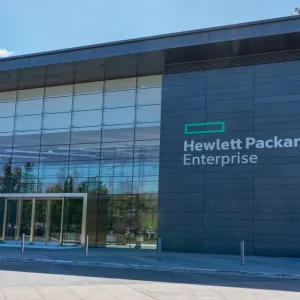
Helping to transform students learn, teachers teach and scientists discover, Macmillan Science and Education uses Jive’s platform to change the company by connecting its multiple businesses, helping employees find information, share ideas, collaborate on projects and harness the power of collective knowledge more effectively.
The Science and Education branch of the publisher was only formed in December 2012 and as a result, globalized the company’s technology function, which we previously separate divisions. As CTO of Macmillan Science and Education, Stephen Devlin is responsible for a team of 450 people, which comprises of all internal systems such as CRM, supply chain and finance, as well as those building digital platforms directly for customers, as Macmillan is as much a digital vendor as it is a publisher these days.
Macmillan wanted to initiate a social business platform as a way for people to connect, find each other and collaborate. Stephen Devlin says: "We also wanted a communication channel with staff that would allow us to engage with the staff at all levels, especially following the recent merger and creation of the new business."
Devlin looked at platforms Jive, Yammer, Confluence and Sharepoint, before narrowing the decision down to between Sharepoint and Jive. "After a lot of evaluation, went for Jive," says Devlin.
Jive was chosen for its focus on social engagement for business. Many of the other platforms have social elements, but their main focus is on other things. For example on Sharepoint there is a lot of focus on document management and content management and workflow, which wasn’t Macmillan’s focus.
Jive allows colleagues to interact socially as well as for business. There are links to extra curricular activities, such as reading and sports groups.
Devlin says: "It’s a fun place to be and it’s a one stop shop for all of your interactions with your colleagues rather than doing one thing somewhere and another thing somewhere else."
"The other thing about Jive is it works out of the box, so it could be up and running within a matter of days if you wanted it to be, which was very attractive from my point of view," adds Devlin.
"The mobile side is also good. Although originally it was the icing on the cake that Jive could go mobile, it has proved to be a really powerful element to the whole equation and the fact that people are using the social element of the platform in their hands even when they’re outside of work has really helped with the engagement.
"We already have elements of BYOD and increasingly a lot of our systems are open to the internet and Jive is a good example of that. It’s in the cloud and you can access it from any device, so whether it’s your own or your corporate one, it doesn’t matter."
Jive was originally instated at Macmillan as a pilot scheme in February 2012. The initial plan was to issue a phased launch between April and July once the pilot had been refined. But the phasing accelerated a lot faster than planned.
"Our pilot was so successful, people kept wanting to sign up, so we took a decision to just let that happen because we thought, actually, it’s a really good sign. So the phasing actually accelerated a lot faster than we thought. The advantage of it being in the cloud is that bringing users on was just a question of literally telling them what the URL was," Devlin says.
Initiating the use of Jive software at Macmillan Science and Technology was an effective way to bring colleagues together under the new single department. Not only has it helped collaboration between colleagues, but it has also helped to instill Macmillan’s core culture and values.
"Despite the company being very fragmented, it’s always felt like a big family, and we are still privately owned, so that culture is very deep in the passion for the brand," says Devlin.
"I think that Jive has helped us to become a physical manifestation of that because the engagement is incredibly high, people are very open and they’re very supportive of each other and it’s been a big success. We’re high in tradition, and there’s a lot of people who like writing and like publishing here, so we have a lot of skilled authors who are blogging and commenting, so it’s quite a diverse place to visit."
Jive effectively permits collaboration between employees across Macmillan. Devlin cites the example of Scientific American, which recently developed a big special issue on how technology is changing education. Editor-in-Chief Mariette Di Christina and her team used Jive to reach our to the education businesses within Macmillan to contact people to write or review articles for the issue.
Devlin is confident that they will see a return on investment within the first year of Jive being in place. "We came at it from the point of view that it’s got a lot of strategic value which is very hard to measure, I think clouds and content will be created that may not have been created without Jive, so it’s hard to quantify", says Devlin.
"People who were floundering to find people and documents will be able to do so much quicker, so we have surveyed some of that data and we are going to revisit it in a few months’ time to see how Jive has impacted it."






